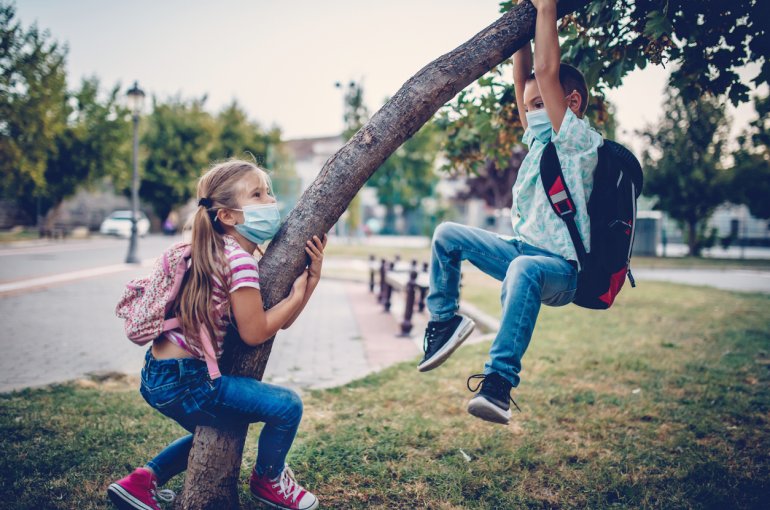The impact of the coronavirus pandemic on young people’s mental well-being

The first lockdown as a consequence of the coronavirus pandemic led to reduced life satisfaction among young people. At the same time, however, they also experienced a slight decrease in physical stress-related symptoms. These are the conclusions drawn from recent research conducted by University Medical Center Utrecht physician-researcher and epidemiologist Sabine van der Laan. Together with PhD supervisors Kors van der Ent and Catrin Finkenauer and co-supervisors Sanne Nijhof and Virissa Lenters, Van der Laan compared the mental health of young people during the first wave of the COVID-19 pandemic with the situation before the pandemic.
Van der Laan’s PhD project saw her monitor 224 young people aged between 12 and 16 who are resident in the Utrecht district of Leidsche Rijn and participate in the WHISTLER project. She started gathering data in February 2019, unaware that the world was about to be hit by a pandemic. “The remarkable thing about these data is that they give an insight into the impact of the coronavirus on the lives and well-being of this group of young people over a prolonged period. We started monitoring their mental well-being before the COVID-19 pandemic started and continued doing so for the entire first year of the pandemic.”
Conflicting messages
Throughout the coronavirus pandemic, there have been stories in the media about its negative consequences on the mental well-being of young people. However, Van der Laan’s findings hint at a more nuanced picture: “For the young people we’ve been monitoring, the pandemic has had both negative and positive effects. On the one hand, young people felt less satisfied with the state of their lives – particularly during the strict lockdown. But on the other hand, they experienced fewer physical stress-related symptoms because they slept better.”
Different life satisfaction outcomes for boys and girls
“The key thing now is to identify those individuals who are most affected by the pandemic, as well as those who are most resilient.” According to her findings, it was mostly boys who experienced reduced life satisfaction after the first wave of the coronavirus pandemic. “Generally speaking, the mental well-being of pubescent girls is worse than that of boys. Our findings bore this out. What was striking, however, was that boys reported feeling less satisfied with life, whereas girls didn’t.”
Improvement in sleeping rhythms
Her research traced the mental well-being of young people in three areas: life satisfaction, symptoms of anxiety and depression, and physical symptoms that might be stress-related. During the first wave, young people were less satisfied with life and their anxiety and depression symptoms remained stable, but they experienced fewer stress-related symptoms because they slept better. “A possible explanation is that young people were able to indulge in their favourite sleeping rhythm: late to bed, late to rise. This was because young people were taught online during the first wave of the pandemic, allowing them to sleep in.”
Chronically ill young people
“While the coronavirus pandemic has had a tremendous impact on young people, those with a chronic illness seem to have been less affected. This raises a number of questions. Which young people are more at risk of experiencing the negative effects of the coronavirus pandemic?”
This is why Van der Laan and one of her co-supervisors, the paediatrician Sanne Nijhof, also investigated the well-being of chronically ill young people during the coronavirus pandemic and compared it to that of their healthy peers. “We’re still analysing the findings, but another study has already shown one positive side of the coronavirus restrictions for young people with a somatic chronic illness: they experienced greater mental well-being during the coronavirus pandemic than their healthy peers,” Van der Laan says.
Busy lives
“I believe young people are under a lot of pressure,” Van der Laan continues. “After all, they face huge demands: school five days a week, homework, friends, a job on the side. This amounts to a busy week. The fact that the young people in our study are currently experiencing less physical stress-related symptoms than before the pandemic raises the question whether they’re able to function optimally in today’s society. Many people tend to see the pandemic as purely negative. I think that we can learn something by looking at it from a more neutral perspective.”

